Dashi is the basic Japanese soup stock used in many Japanese dishes. Learn how to make Awase Dashi at home with umami-packed ingredients like kombu (dried kelp) and katsuobushi (dried bonito flakes).
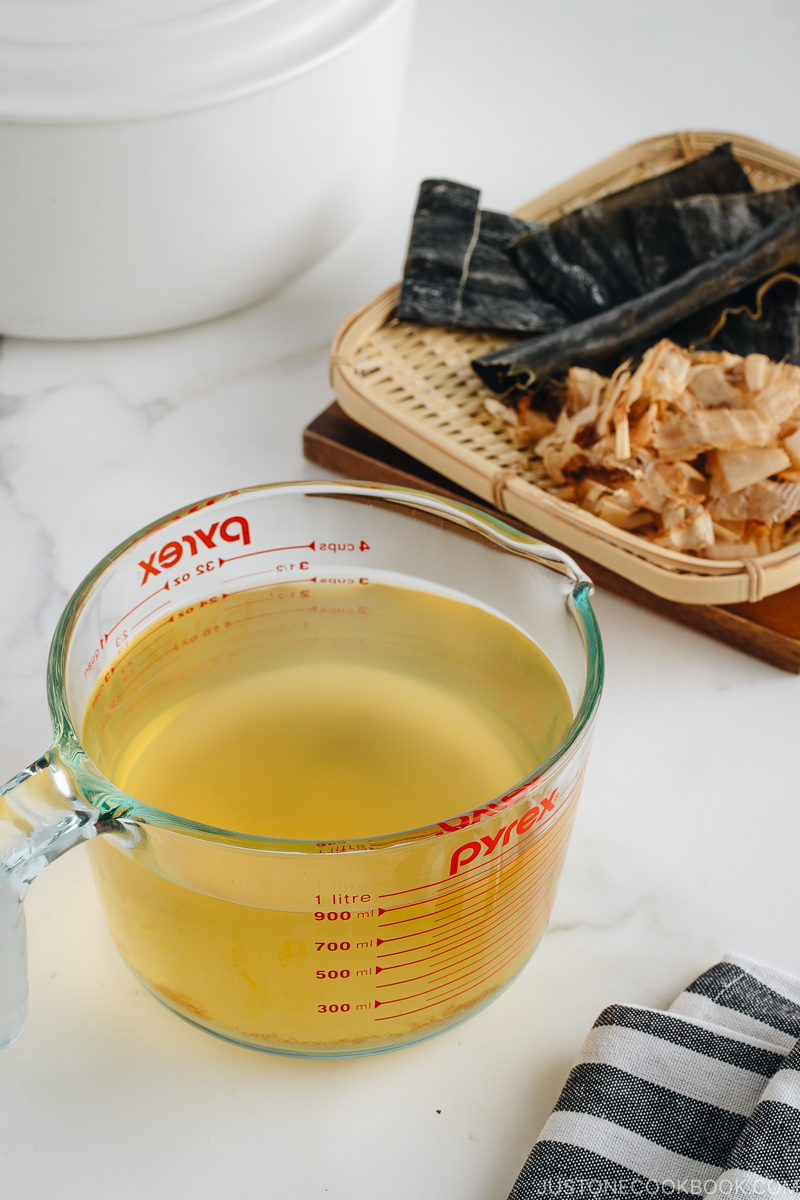
When you decide to make Japanese food, you will realize that a lot of recipes require dashi, Japanese soup stock.
With this unfamiliar ingredient, you may think Japanese food is hard to replicate at home. On the contrary, dashi is actually the easiest soup stock anyone can make from scratch as it requires only 1-2 ingredients and 20-minute prep time. This post shows you how you can make Awase Dashi using a combination of ingredients. Once you learn the ins and outs of dashi making, you’ll be ready to tackle Japanese cooking with a breeze.
Table of Contents
What is Dashi?
Dashi (だし, 出汁) is Japanese soup stock that builds the bases for many of your favorite Japanese dishes like miso soup, chawanmushi, ramen, and shabu shabu. It is the essence of authentic Japanese flavor, and it tells the dishes apart if other substitutions are being used in place of the soup stock. And what defines dashi is the use of carefully selected ingredients like kombu, bonito flakes, shiitake mushrooms, and anchovies, and each ingredient is uniquely Japanese.
In general, there are five different types of dashi (two are vegan). Scroll down to see 5 different types or check out my Ultimate Dashi Guide. When we say “dashi” in Japan, it usually implies Awase Dashi because it’s the most commonly used stock.
Awase Dashi (合わせだし) is made from a combination of kombu (dried kelp) and katsuobushi (dried bonito flakes), and it’s the seafood-based stock. *Awase (合わせ) means “to combine”, “mixed”, or “together.”
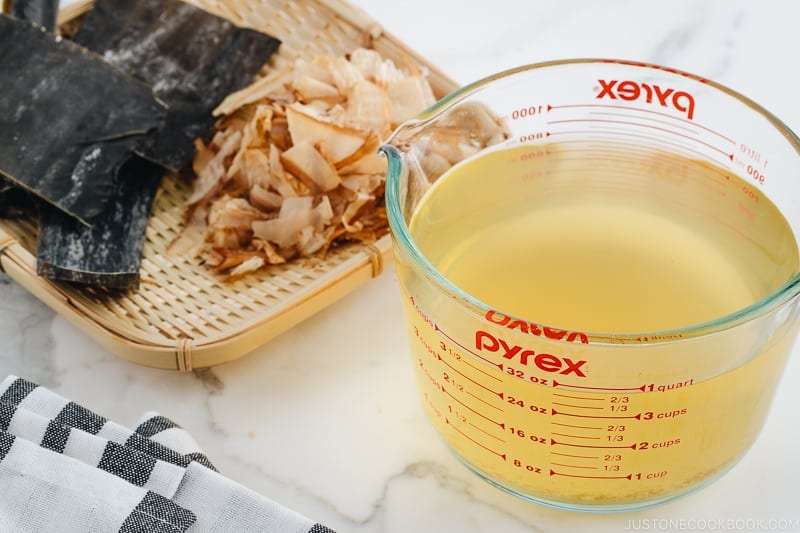
How to Make All-Purpose Basic Dashi
The First Dashi
The base of Awase Dashi is a vegan Kombu Dashi made from dried kelp. You can cold brew or hot brew kombu to make the dashi. Then you would add dried bonito flakes to the kombu dashi. This makes the stock more enriched. When you make dashi from the spent kombu and katsuobushi, it’s called Ichiban Dashi (一番だし). It’s basically the first pure dashi.
The Second Dashi
Niban Dashi (二番だし), or the second dashi is made from the spent kombu and katsuobushi, which you reserved from making Ichiban Dashi. Niban Dashi is a lighter, less intense dashi, yet still provides a great umami flavor despite the previously used ingredients.
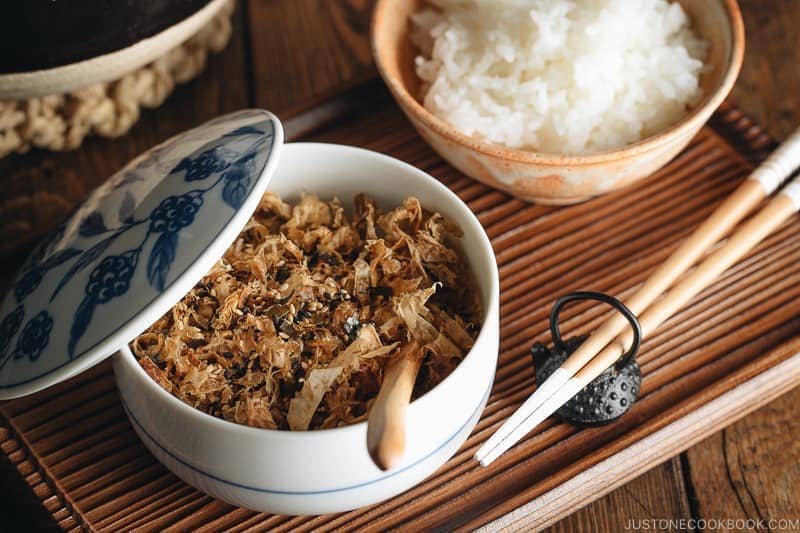
Do we really need to make dashi twice?
At a regular household, we make such a small amount of dashi that it’s not very efficient to make both Ichiban Dashi and Niban Dashi. My suggestion is to make very good Ichiban Dashi and utilize the used kombu and katsuobushi to make Homemade Furikake (rice seasoning) and Kombu Tsukudani (simmered kombu) after collecting enough used kombu and katsuobushi. This way, there will be no waste, and you get another side dish to accompany your meal.
So then who makes Niban Dashi? Japanese restaurants make a huge batch of dashi daily. They use Ichiban Dashi for dishes like Clear Soups (Osumashi おすまし) and Chawanmushi, which require the pure and maximum amount of umami from the dashi ingredients. They typically use Niban Dashi for simmered food (Nimono) and miso soup, which doesn’t require much flavor from the soup stock.
Dashi Shortcut
Sometimes life happens and you just don’t have 20 minutes to make dashi from scratch. On those occasions, you can use Dashi Packet or Dashi Powder.
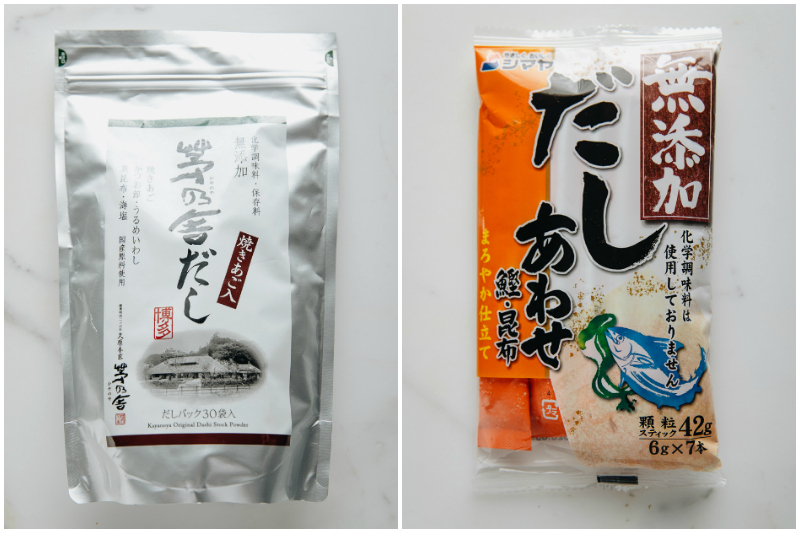
I love using Kayanoya Dashi Packet (left) and Shimaya Dashi Powder (right). Both are MSG-free and additive-free. You can purchase them at Japanese grocery stores or on Amazon:
The instruction on how to use them (recipes) can be found in the Dashi Packet post and Dashi Powder post.
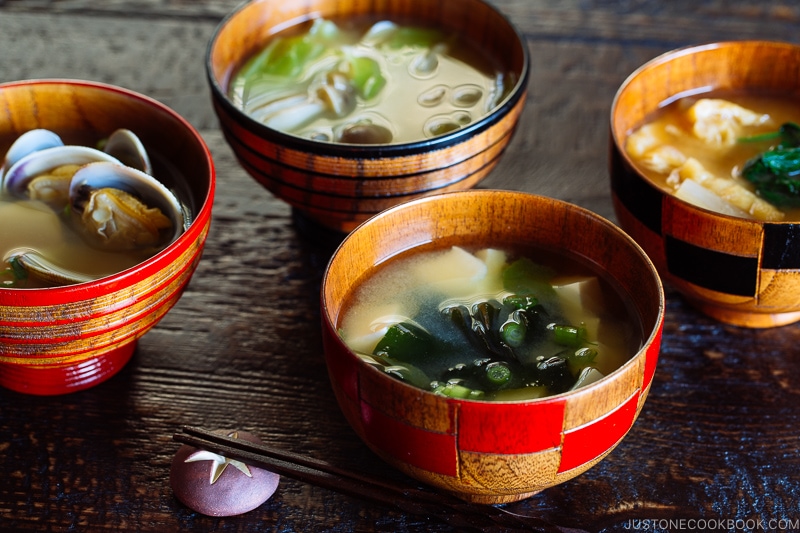
Easy & Delicious Recipes Using Dashi
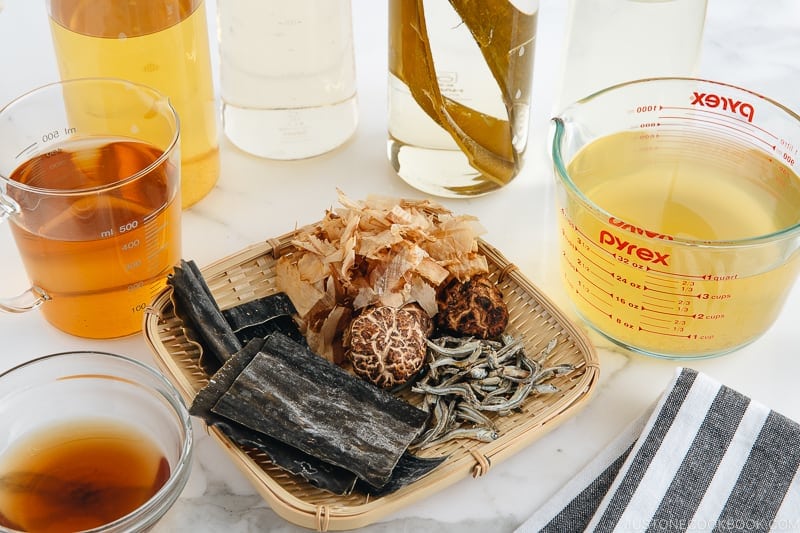
The Ultimate Dashi Guide
Dashi plays an important role as a flavor enhancer in Japanese cooking, so you don’t need to season the food with too much salt, fat, and sugar. Rich in minerals and other vitamins, dashi is considered a healthy ingredient in our daily diet.
There are six different types of dashi you can use in Japanese cooking, including vegetarian and vegan dashi (*).
- Awase Dashi – a stock made from a combination of dried kelp + bonito flakes
- Kombu Dashi * – a stock made from dried kelp
- Katsuo Dashi – a stock made from dried bonito flakes
- Iriko Dashi – a stock made from dried anchovies/sardines
- Shiitake Dashi * – a stock made from dried shiitake mushrooms
- Vegan Dashi * – a stock made from dried shiitake mushrooms and kombu
If you are new to different types of dashi, check out my Ultimate Dashi Guide.
Wish to learn more about Japanese cooking? Sign up for our free newsletter to receive cooking tips & recipe updates! And stay in touch with me on Facebook, Pinterest, YouTube, and Instagram.
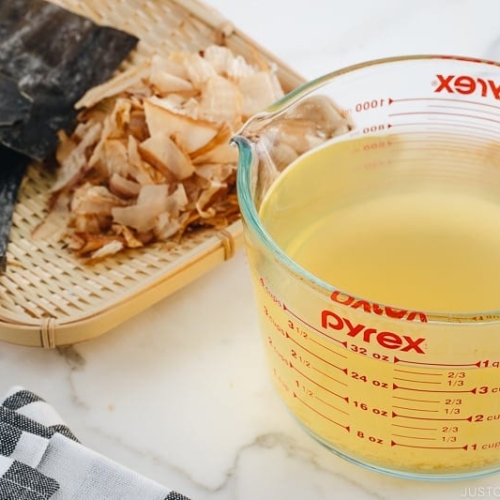
Awase Dashi (Japanese Soup Stock)
Video
Ingredients
- 1 piece kombu (dried kelp) (10 g; 4 x 4 inches, 10 x 10 cm per piece)
- 1 cup katsuobushi (dried bonito flakes) (packed; 10 g)
- 4 cups water
Instructions
Before You Start…
- Sometimes life happens and you just don‘t have 20 minutes to make dashi from scratch. On those occasions, you can use a Dashi Packet or Dashi Powder.

- Gather all the ingredients. Most Japanese recipes would say to gently clean the kombu with a damp cloth. However, these days, kombu is quite clean, so just make sure it doesn't have any mold spots and it‘s ready to use. Do not wash or wipe off the white powdery substance, as it has lots of umami.

- Make several slits in 1 piece kombu (dried kelp) to release more flavor.

To Make the Cold Brew Kombu Dashi Ahead of Time (Optional)
- Put 4 cups water and the kombu in a large bottle and let it steep on the counter for 2–3 hours in the summertime and 4–5 hours in the wintertime. You can also cold brew the kombu dashi overnight in the refrigerator.

To Make the Awase Dashi
- Add the kombu and water to a medium saucepan. If you have cold brew Kombu Dashi (previous step), add the Kombu Dashi and hydrated kombu to the saucepan.

- Turn on the heat to medium low and slowly bring to almost boiling, about 10 minutes.

- Meanwhile, clean the dashi by skimming the foam and debris from the surface.

- Just before the dashi starts boiling gently, remove the kombu from the saucepan (discard or repurpose in other recipes—suggestions follow). If you leave the kombu in the saucepan, the dashi will become slimy and bitter.

- Add 1 cup katsuobushi (dried bonito flakes) and bring it back to a boil again.

- Once the dashi is boiling, reduce the heat, simmer for just 30 seconds, and turn off the heat.

- Let the katsuobushi sink to the bottom, about 10 minutes.

- Strain the dashi through a fine-mesh sieve over a bowl or measuring cup. Reserve the katsuobushi and repurpose it; see the suggested recipes that follow. The Awase Dashi is ready to use.

To Store
- If you are not using the dashi right away, store the dashi in a bottle or mason jar and keep it in the refrigerator for 3–5 days or in the freezer for 2 weeks.

What to do with the spent katsuobushi and kombu?
- Save the spent kombu and katsuobushi in an airtight container and store it in the refrigerator for a week or in the freezer for up to a month.

- With the spent kombu, you can make Simmered Kombu (Kombu Tsukudani).

- You can also make Homemade Furikake (Rice Seasoning).

Optional: Niban (Second) Dashi
- In a medium saucepan, put 2–4 cups* of water and previously used kombu and katsuobushi from making the first dashi. Bring it to a boil over medium-low heat. *2 cups would make a stronger dashi.
- Remove the kombu just before the liquid comes to a boil, then lower the heat, and cook for 10 minutes, skimming occasionally.
- Add an additional ½ cup (5 grams) of fresh katsuobushi and turn off the heat.
- Let the katsuobushi sink to the bottom and strain the dashi through the fine-mesh sieve.
Nutrition
Editor’s Note: This post was originally published in January 2013. The images and content have been updated in April 2019.
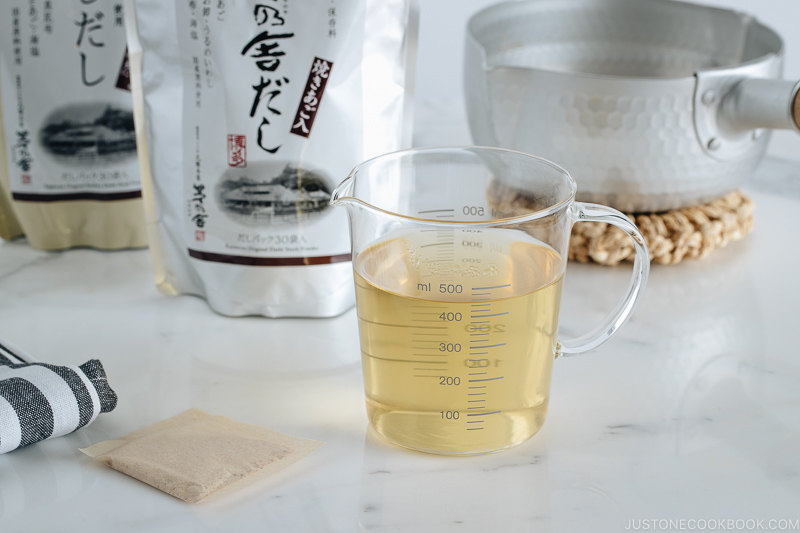
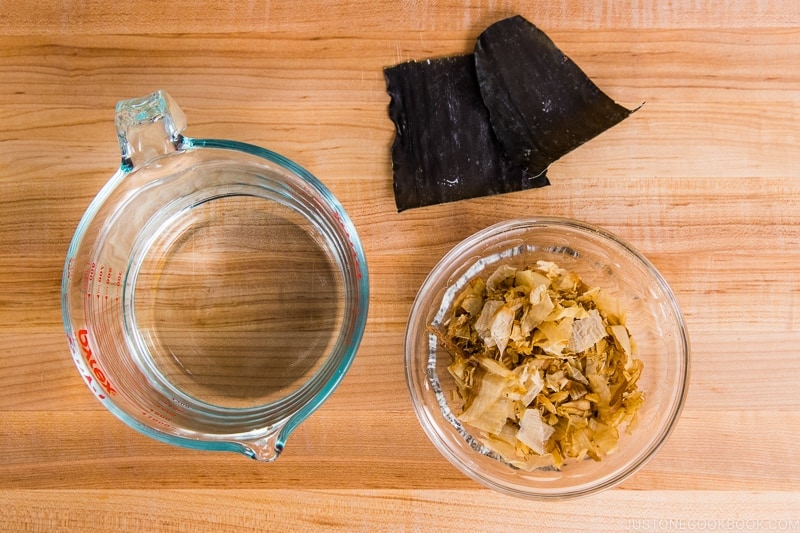
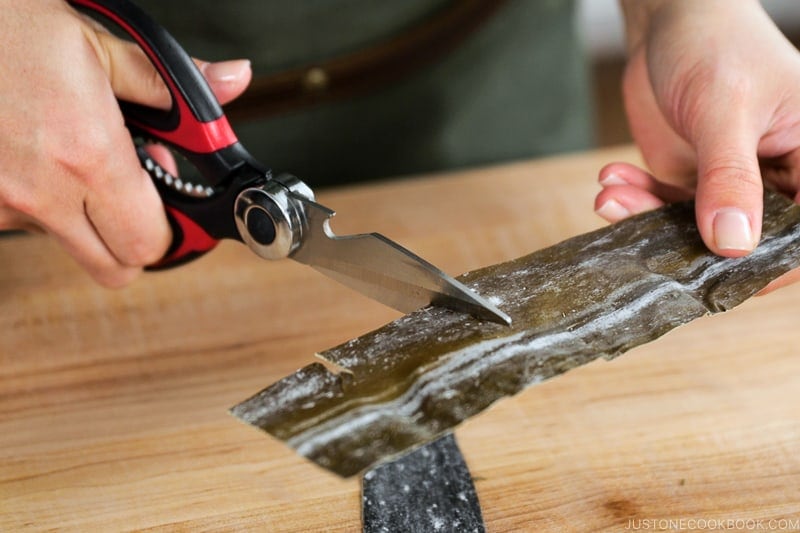
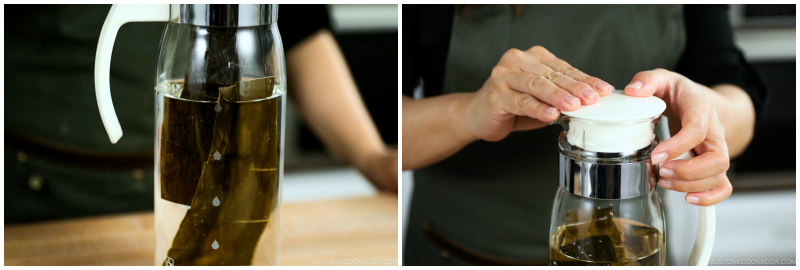
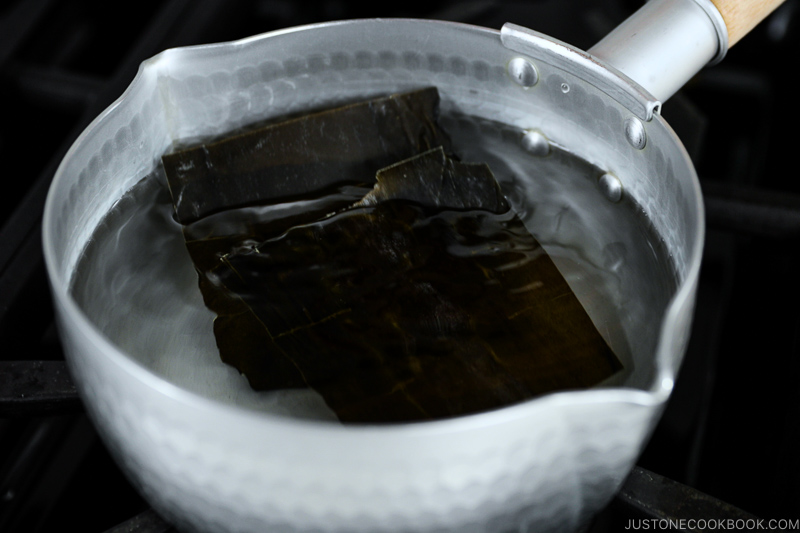
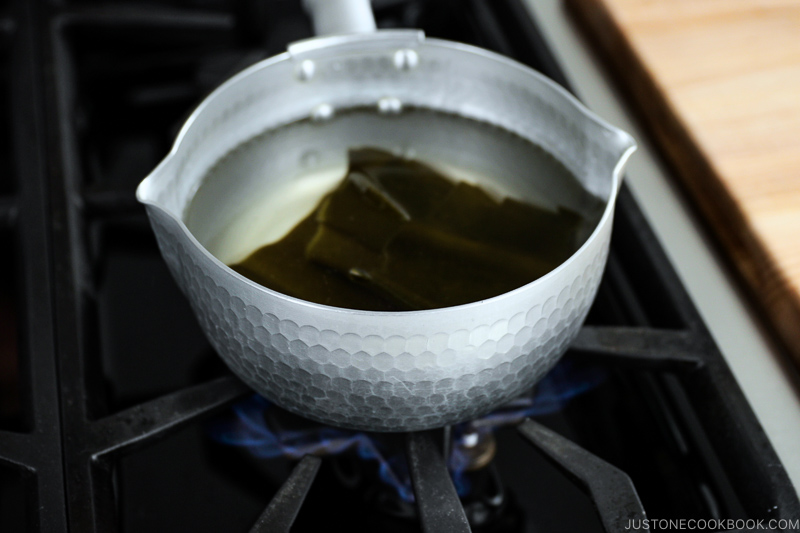
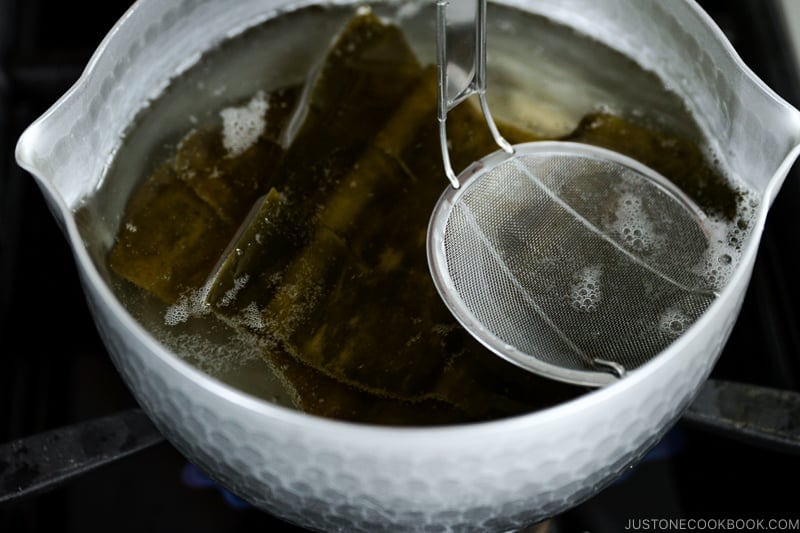
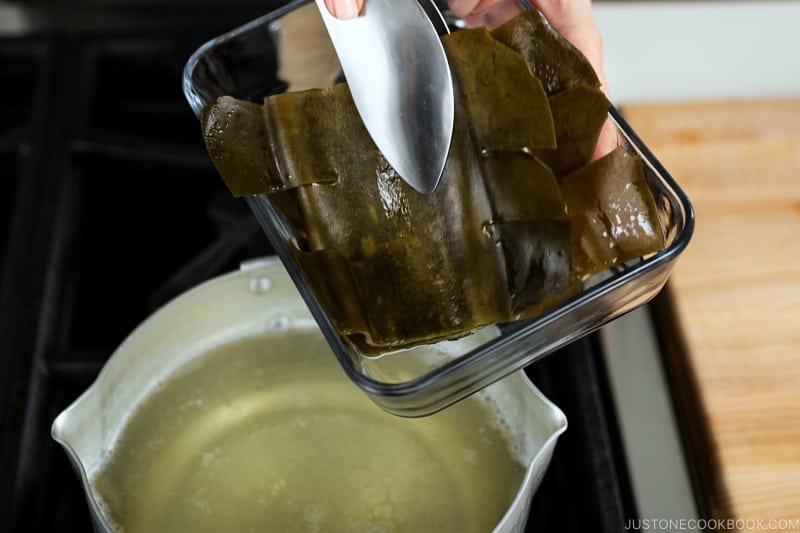
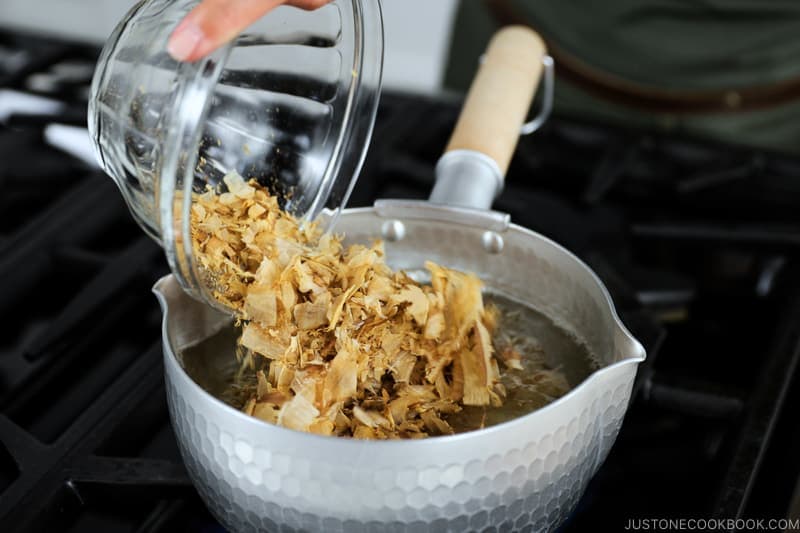
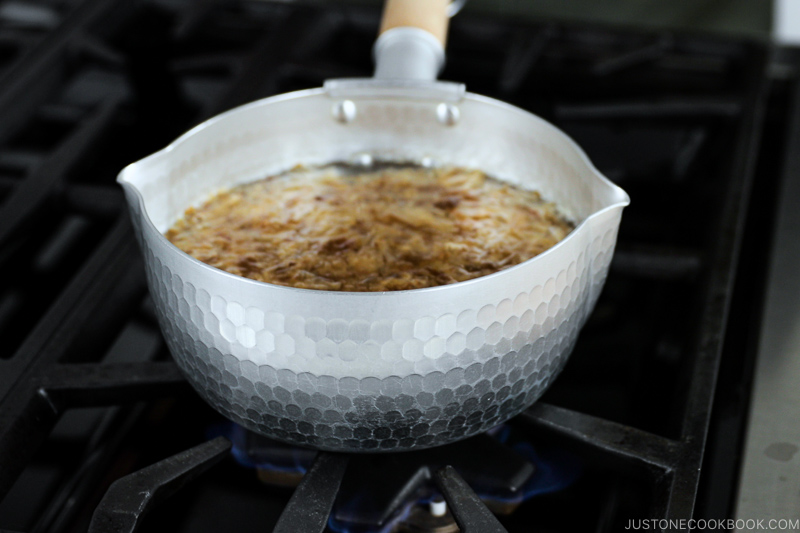
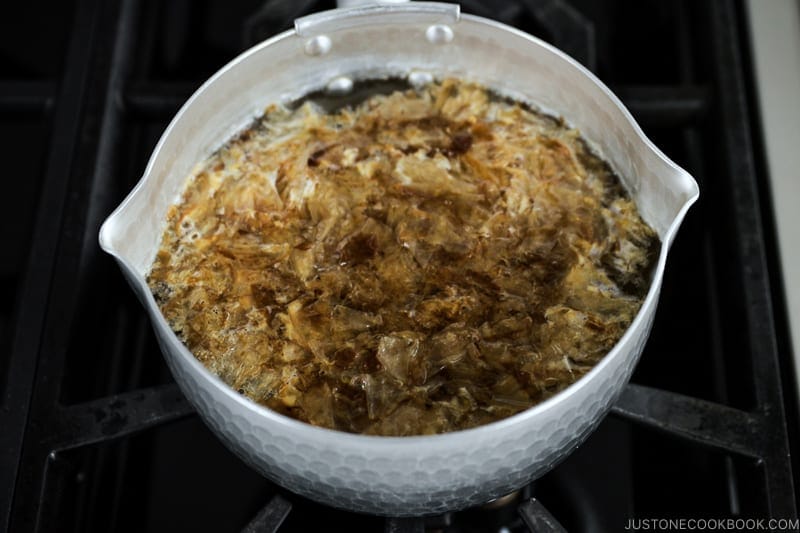
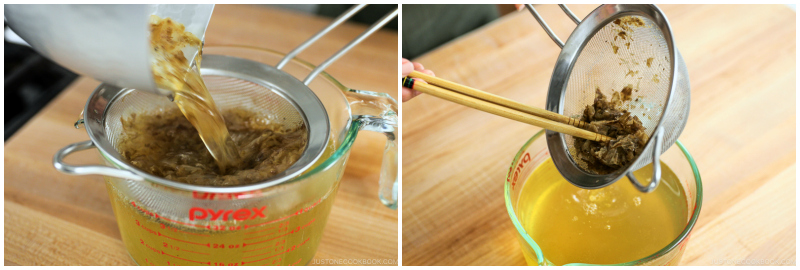
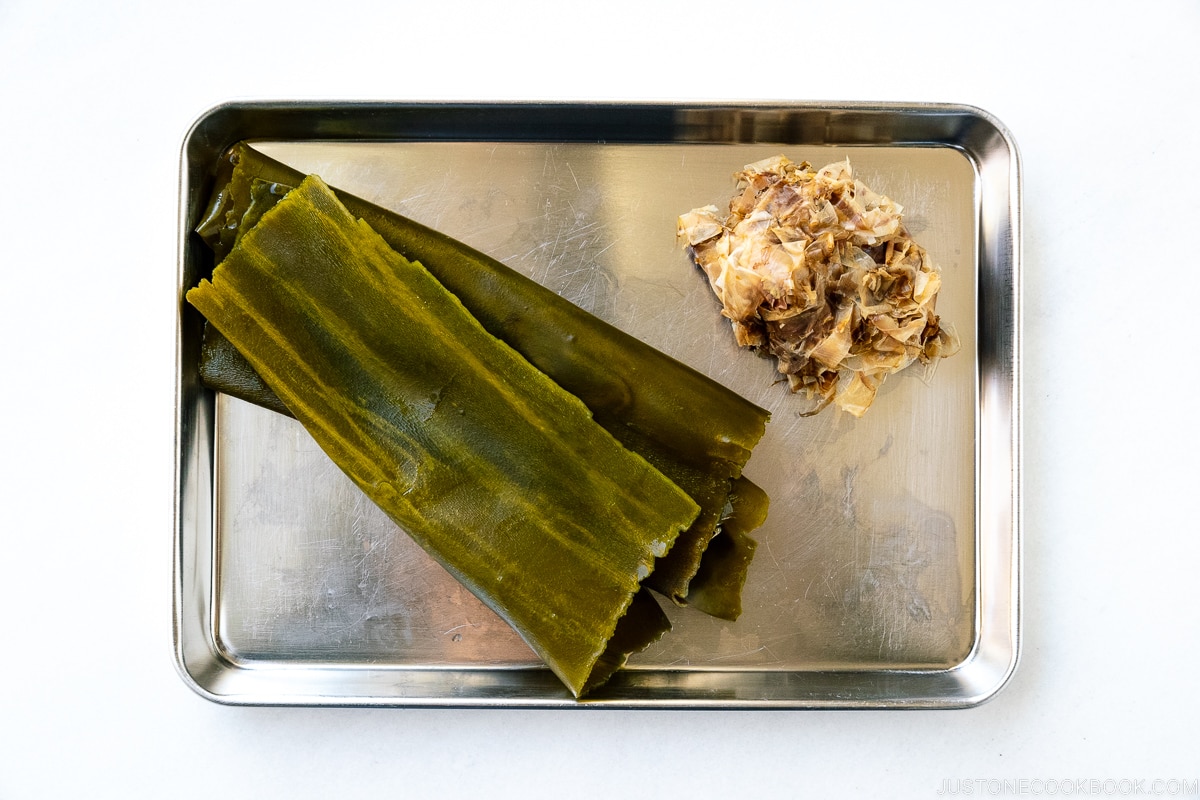
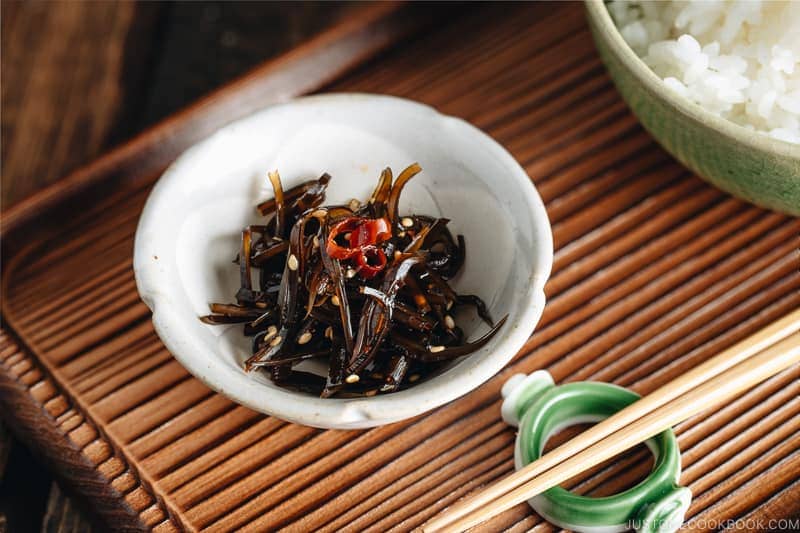
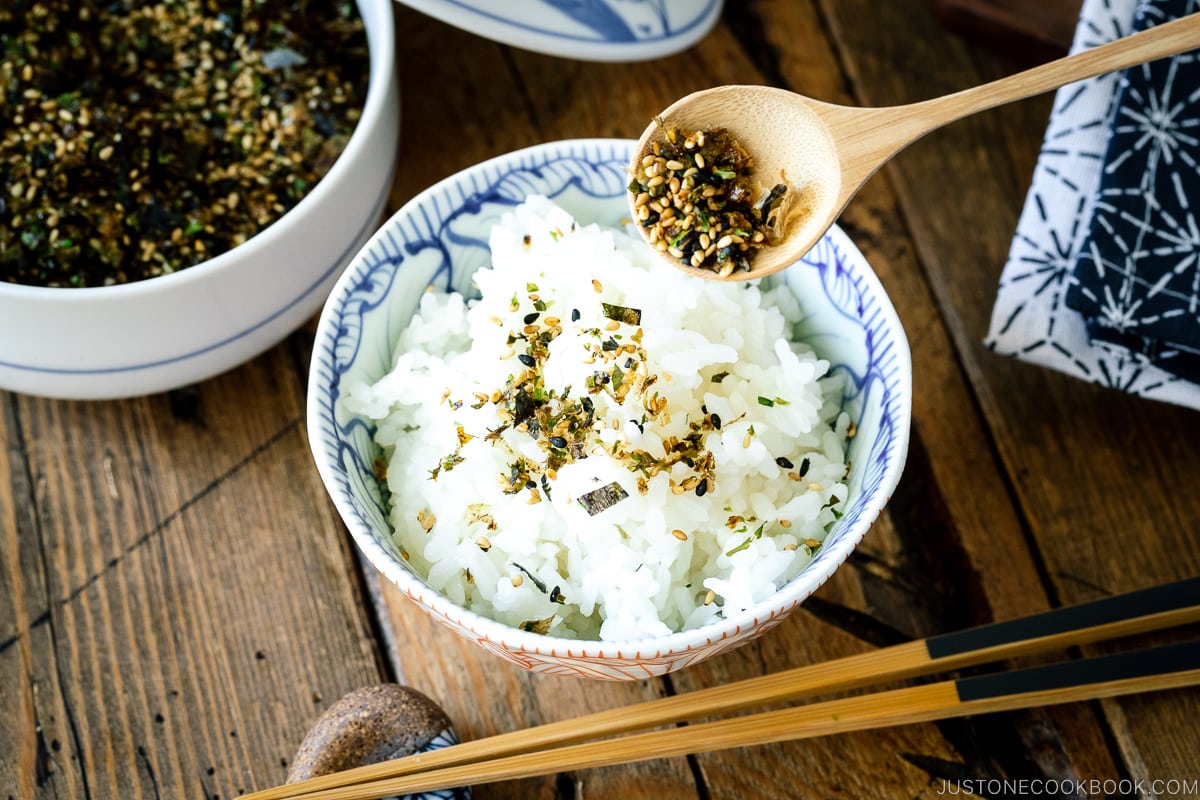










About to make this for the second time, it’s great! How do you recommend storing the leftover Kombu and bonito for niban Dashi? Freezer?
Hi Jennifer! So sorry for my late response. I’ve been caught up with fixing data for my website renewal and I couldn’t get back sooner. 🙁 Yes, you can freeze them, and usually recommended to use in 2 weeks, but I kept them for a bit longer too… 🙂
can i soak the Kembu overnight?
Yes, you can do that. Some people do not like the slimy liquid, but it also depends on the type of kombu. So give it a try and see how it goes. 🙂
Look for Nami’s dashi ochazuke recipe it is a simple to make yet delicious food. Or gyudon.
I have begun making dashi from scratch using your recipe and it truly makes a difference when cooking other dishes even if they’re as simple as miso shiro. It is way more delicious than hondashi granules which is what I used to use.
Hi Kessia! Thank you so much for your kind feedback. I’m so happy to hear you enjoy homemade dashi. Yeah, granules only has fragrance for a few seconds and then disappear. Thank you for your kind words. 🙂
Thank you for the recipe! I just have one question…for the 3 cups of bonito flakes did you use a dry measure or did you use a liquid measure to measure out 3 cups? Thanks!
Hi Ian! If you use a dry measuring cup, 1 cup packed is 10 gram. You will need 3 of that. 🙂
I’m planning on making Miso Soup with this… can it be diluted or is it recommended to be full strength dashi for miso soup? Just made this today. Looking forward to trying some recipes out with it. Thank you!
Hi Emily! You can dilute it if you think it’s strong, but my recipe is pretty standard way to make dashi. Hope you enjoy making miso soup! 🙂
Hi Nami – can you freeze dashi? Will it still taste good?
–Kathy
Hi Kathy! Yes, you can freeze, or keep in the fridge up to a week. 🙂
Hi Nami, for the niban dashi do I have to use the leftover kombu and bonito flakes right away or can I keep them in the fridge for a couple of days? Thanks
Hi Jesus! Yes, you can keep in the fridge for 2 days or so in the fridge, or 1 month in the freezer. 🙂
Hi Nami: what’s the name of the tool you used to skim the dashi? Also where did you purchase it? Thank you.
Hi Christina! I listed the fine mesh skimmer in my shop page – https://www.justonecookbook.com/shop/
Ah thank you. ????
I made this today for the base of Ozoni. It is DELICIOUS! Domo Arigato!
Hi Yurika! I’m so glad you enjoyed your homemade dashi for your Ozoni! Happy New Year!
Hi Nami, Can we do this with the instant pot? If so, how?
Thanks! Looking forward! 🙂
Never mind.. I misread the recipe that it needs to be boiled for 3 hours.. you meant to just soak it for 3 hours…. so, no instant pot required here I supposed 😉
Thanks.
Hope you enjoy making homemade dashi. If you don’t have 3 hours, don’t worry, just soak the kombu as long as possible. 🙂
What do you mean when 3 cups equals 30gs, is that 30g per cup?
what is it in oz
3 packed cups of katsuobushi is 30 grams, that’s 1.06 oz. Sorry about the confusion.
Hi Nami,
I made this dashi this morning and it’s so delicious and easy! In the recipe, you mention using the leftover konbu and katsuobushi to make homemade furikake, but the link is broken. I was wondering if you have a recipe for this somewhere, or if you’d be happy to post another one? It’s something I’ve wanted to make for ages!
Hi Anna! Sorry about the broken link. Somehow the end of link was additional letter. Here’s the link.
https://www.justonecookbook.com/how_to/homemade-furikake-rice-seasoning/
Hope you enjoy!
Hi Nami-San. I’ve tried preparing the Awase Dashi using your recipe. On my second attempt, the dashi was slightly bitter as I turned off the stove a tad too late when boiling the kombu and water mixture. Hence, I wonder if you would be able to advise how to save the dashi in this case. Thank you very much in advance!
Hi Mei! I apologize for my late response. Hmm.. once it’s bitter, it would be hard to undo. You could dilute it with water for less bitter taste, or if I were you, I’d use the dashi for something that requires more flavoring – like hot pot. Ingredients will have lots of flavors and will be hard to know the bitterness of dashi. Hope that helps!
How much of a loss is it to replace 4 cups with 8 cups? I’ve never done this before, and I’m not even sure what I’m gonna think about the taste. Still, I want it to be “right” (though I know there’s no one right way to do it).
I can’t think of a lot of other things I make where twice as much water is ever a good idea? What do you think? My first meal from this page will probably be the Oyakodon (Chicken and Egg Bowl). I don’t want it to taste watered out, but making twice as much Dashi for other meals is tempting as well.
Hi Freddy! Good question, and thank you for asking. For good oyakodon, I recommend 4 cups dashi instead of diluted 8 cups for a nice rich dashi flavor.
But 8 cups is actually not that diluted at all. I’d use it for miso soup, hot pot, simmered dishes, or even curry udon that has OTHER flavors (like miso, soy sauce, curry etc), when it’s not relying SOLELY on dashi flavor – such as chawanmushi or dashi-base miso soup.
4 cups dashi will have more intense flavor of dashi. It also gives more elegant flavor. Some people who don’t like ‘fishy’ taste may want 8 cups. Hope this makes sense. 🙂